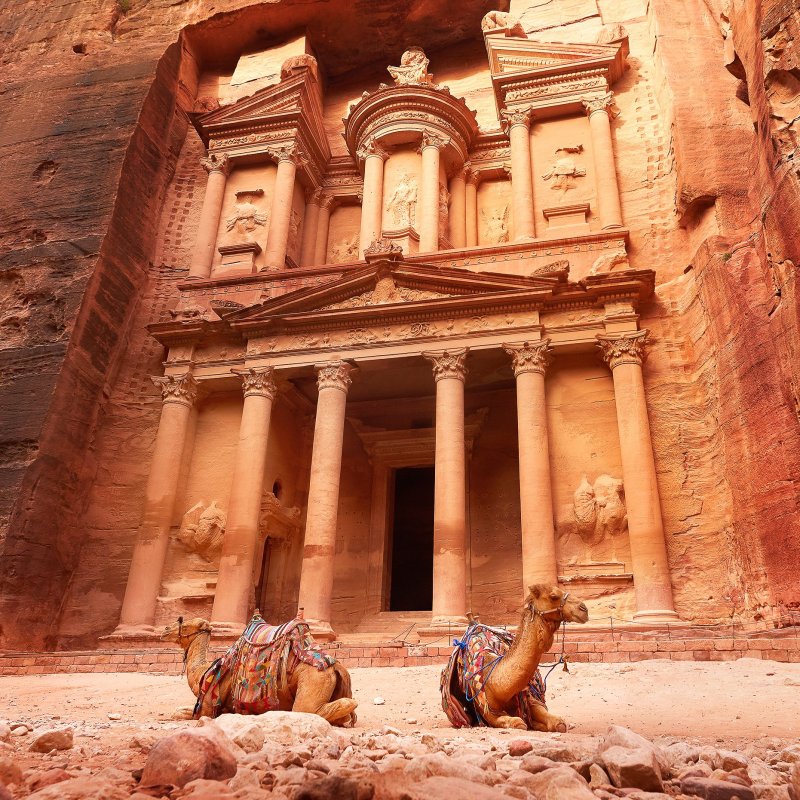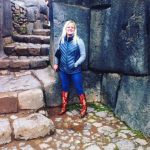
Fans of Indiana Jones and the Last Crusade will remember the pivotal scene at the end of the movie when the elder Jones and his son stumble upon the lost city of Petra, the formidable and mysterious resting place of the Holy Grail.
Videos by TravelAwaits
To call Petra a wonder is a gross understatement. This rose-colored city carved into a sheer cliff face is a masterpiece of ancient ingenuity and skill. It was rediscovered in 1812 by John Lewis Burckhardt and has since become a wildly popular tourist destination for those who want a firsthand encounter with this preserved ancient city.
Here are eight fascinating facts that will make you want to pack your bags and head to this astonishing Jordanian treasure.

1. It’s A UNESCO World Heritage Site
Petra is a protected UNESCO World Heritage site that has “outstanding universal value” due to its functionality, preservation, and architecture. Its location in the desert means that the original inhabitants needed to creatively devise ways to get water and other resources to the city.
This resourcefulness, coupled with Petra’s sheer size and beauty, makes it one of the most cherished UNESCO sites in the entire world.

2. The Famous Treasury Is Actually A Graveyard
Despite what you’ve seen on the silver screen, Petra’s Treasury is not a looming maze of booby-trapped rooms designed to separate the righteous from the unworthy, but a relatively small area that is most likely a beautifully decorated graveyard.
Any buried treasure was likely removed long ago, but the Treasury facade itself is a gem, lovingly carved by the Nabataeans centuries ago.

3. It’s Home To More Than 1,000 Tombs
The Nabataeans held their dead in high esteem and took special care to honor them as they passed from this world to the next. They built more than 1,000 protected tombs on the mountains in and around the city.
These tombs mingle with depictions of their gods, lending an air of fluidity between the sacred and earthly.

4. It Honors The Sun
Like many peoples of the time, the Nabataeans worshiped the sun as a source of light and life, and Petra’s design reflects that reverence. Many of the city’s most sacred spaces are constructed to align with solar patterns, including solstices.
This careful design gives modern scientists and archeologists valuable insight into what the Nabataeans held dear, and exactly how special Petra must have been.

5. Some Of The Descendants Of The Nabataeans Still Call It Home
The B’doul tribe claims that it can trace its lineage back to the original Nabataeans, and some members still live in and around the remains of Petra. Today, many from the B’doul and other Bedouin tribes work as tour guides.
6. It Was Destroyed By A Massive Earthquake
In A.D. 363, Petra was struck by a gigantic earthquake that leveled most of the city and ended its reign as a thriving and wealthy trading center. After the disaster, many residents of Petra left the area, and the city was lost to the ages.

7. It’s Near A Famous Biblical Site
According to the Bible, Moses drew water from a stone in Wadi Musa, or the Valley of Moses. Petra’s water supply was derived from this location, which, according to Biblical tradition, continued to gush water after Moses’s miraculous act.
Although the architects of Petra were not Christian, the ancient city’s proximity to Wadi Musa makes it an intriguing pilgrimage site for Christians.
8. It’s One Of The New 7 Wonders Of The World
Petra is classified as one of the New Seven Wonders of the World, along with the spectacular Incan city of Machu Picchu, India’s Taj Mahal, the Roman Colosseum, Mexico’s Chichén Itzá, the Great Wall of China, and Brazil’s Christ the Redeemer statue.

What To Know Before You Go
Petra is sweltering during the summer months, so plan your trip for late spring or early autumn. Unfortunately, the majority of the ancient city is not wheelchair accessible, and no cars are allowed near the ruins. You have the option of traveling by donkey, horse, or camel.
Bring plenty of sunblock, water, and comfortable shoes, as well as a light scarf to cover up your shoulders when accessing sacred areas.
Petra is a magical place steeped in history and culture, and it should most certainly be on your bucket list.
Planning a trip to Jordan? Check out these off-the-beaten-path spots in the country.

